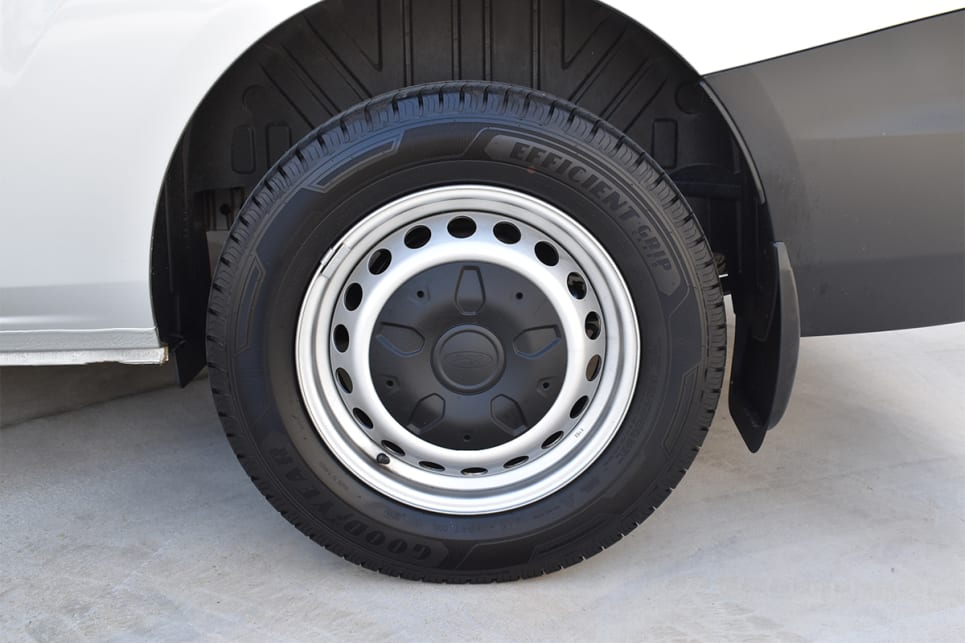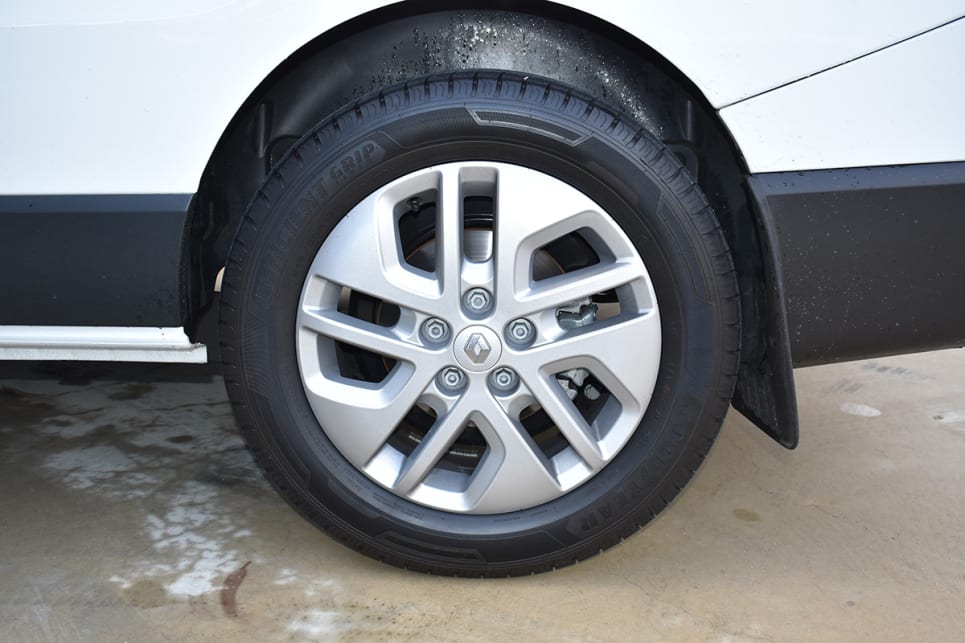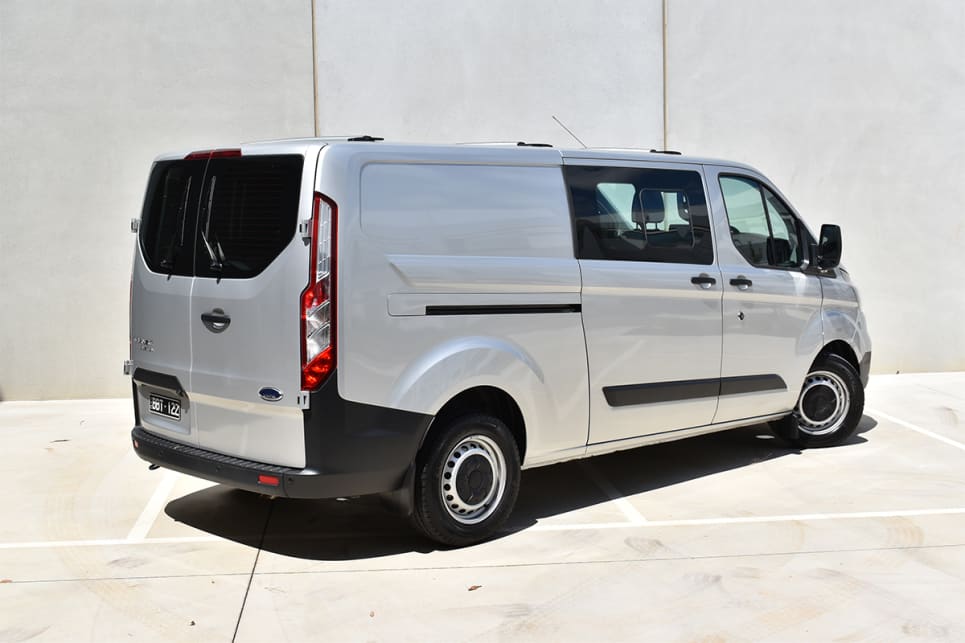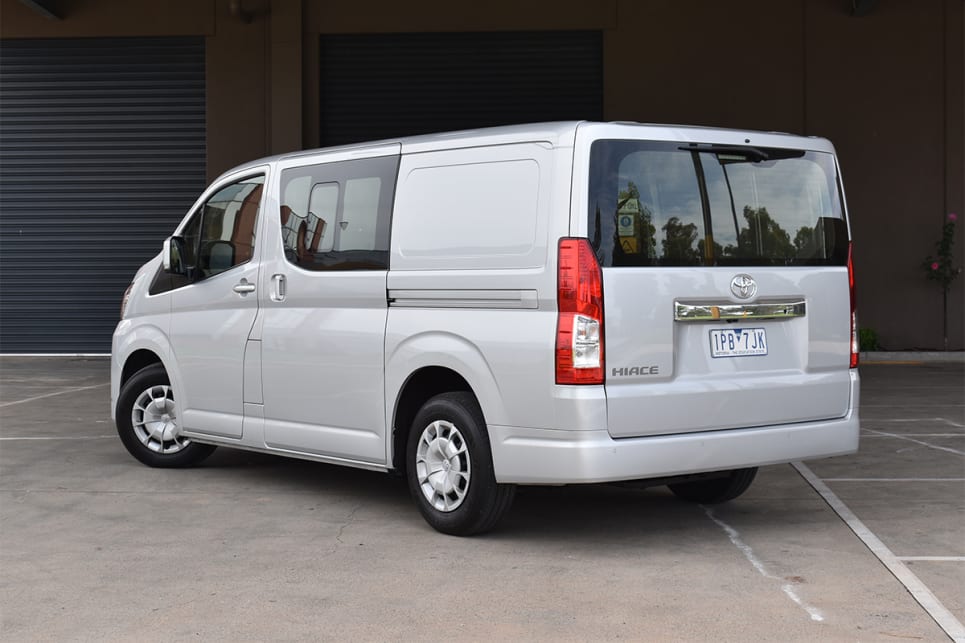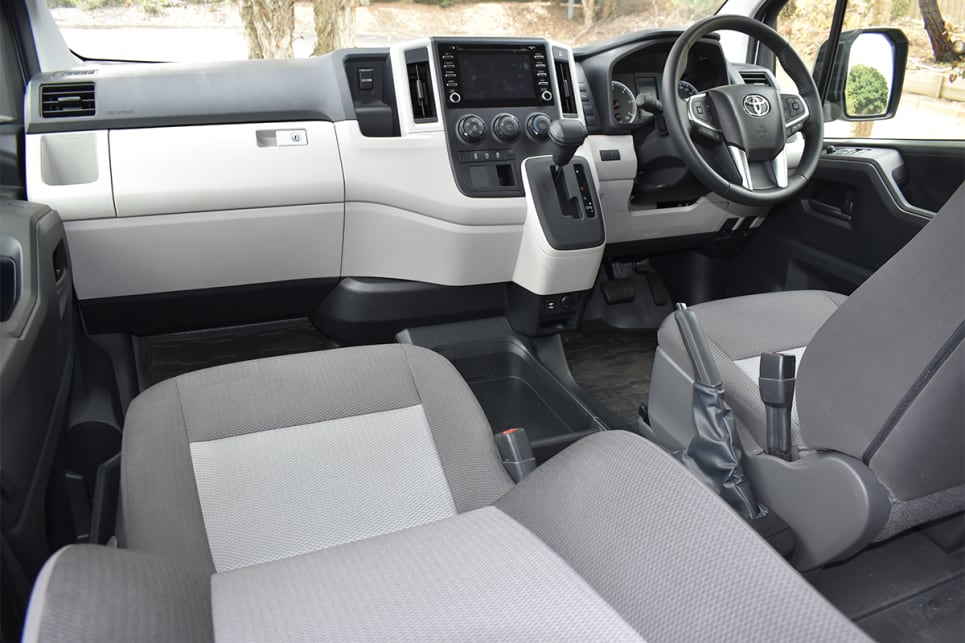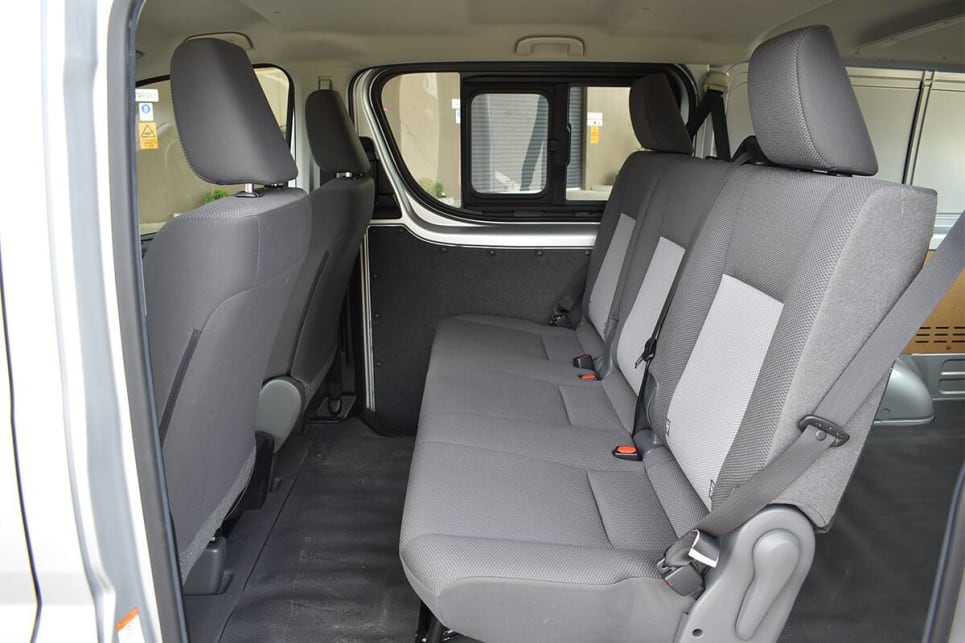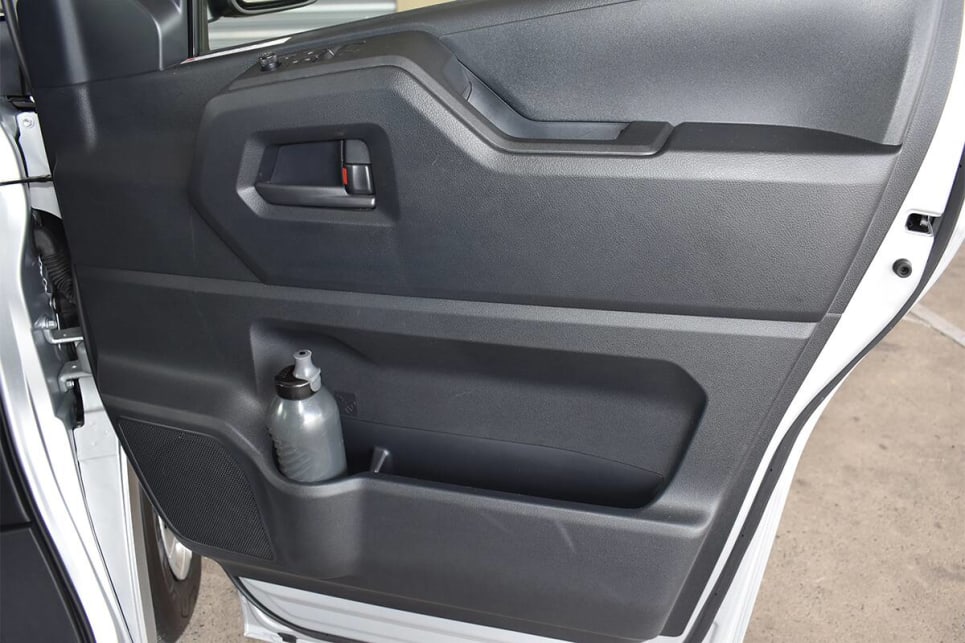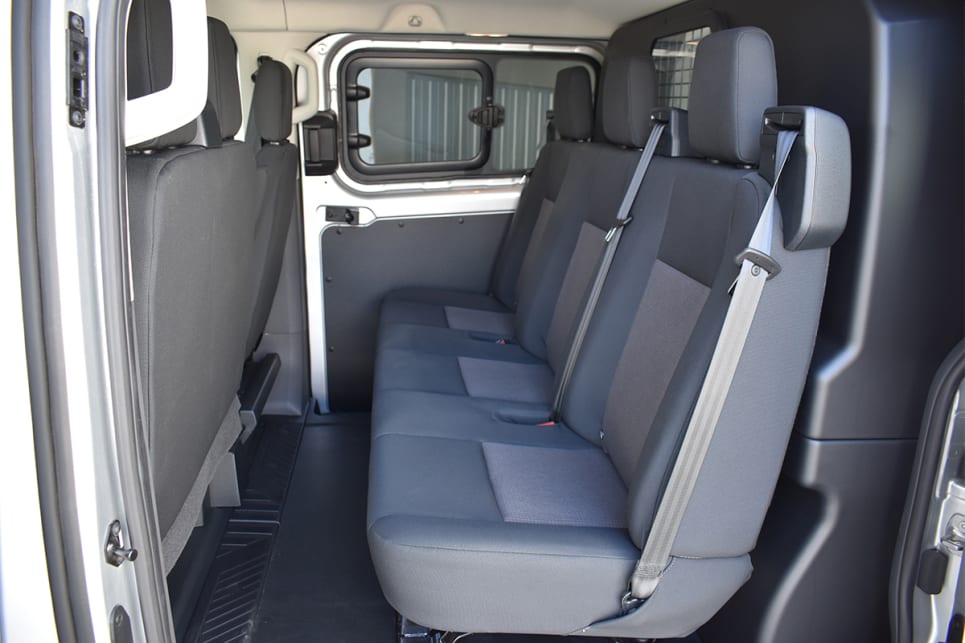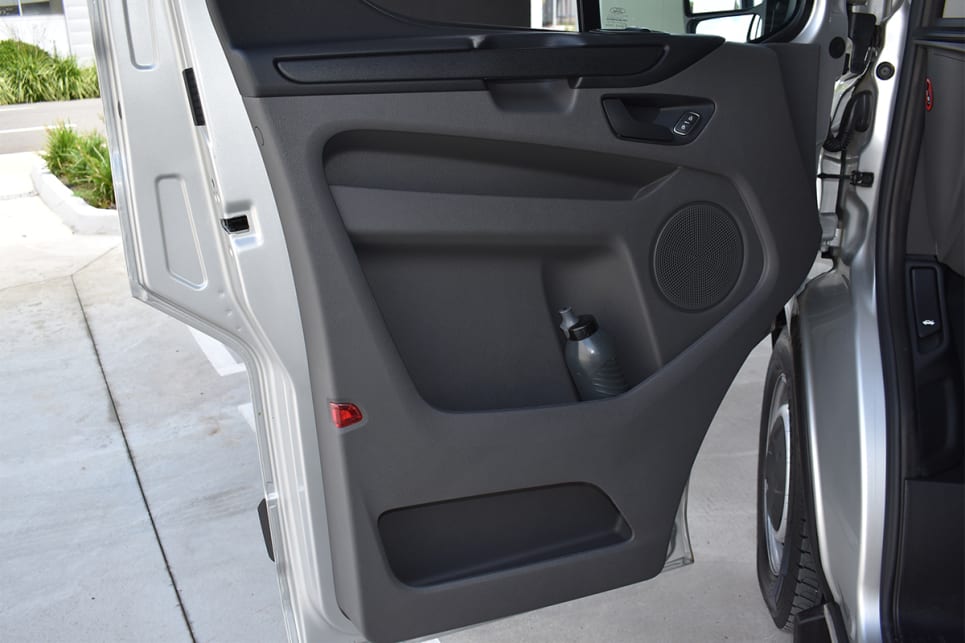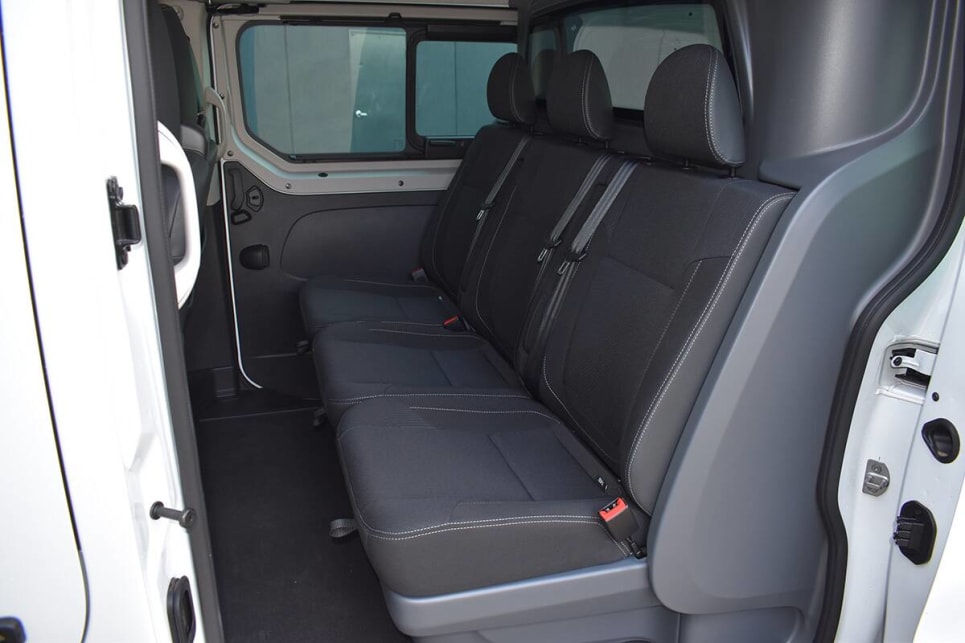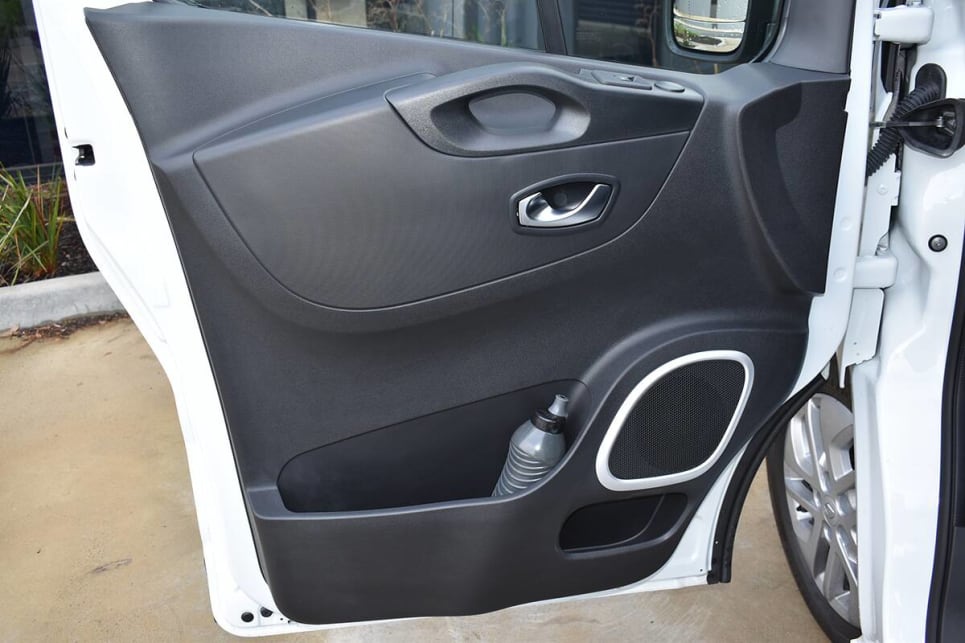The HiAce’s 2305kg kerb weight and 3300kg GVM results in a near one-tonne payload of 995kg. That sounds great, but keep in mind that a crew of five adults could use up about half of that payload capacity before you start to load any of their gear on board.
It's also rated to tow up to 1500kg of braked trailer and with a 4800kg GCM (or how much it can legally carry and tow at the same time), that means it can tow that weight without any reduction in payload required. That’s a very practical set of numbers for a multitude of work or recreational roles.
The Transit’s 2251kg kerb weight undercuts the HiAce by some 54kg and its 3400kg GVM results in a big 1149kg payload capacity. Up to 100kg of that can be carried on its clever trio of roof racks, which lie flat against the roof when not in use but can be quickly rotated through 90 degrees and locked into vertical positions for load carrying.
-
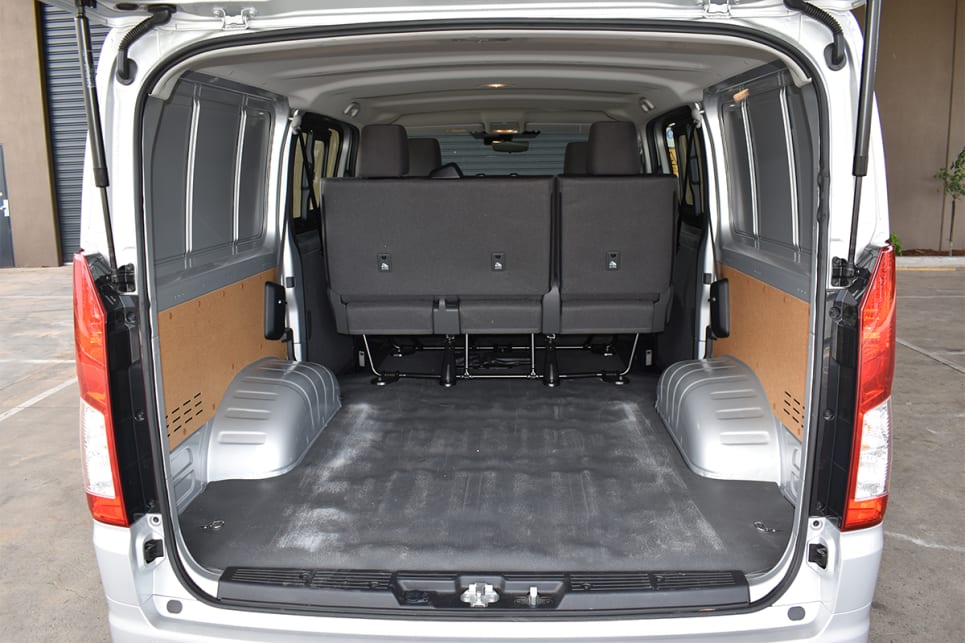 The HiAce’s 2305kg kerb weight and 3300kg GVM results in a near one-tonne payload of 995kg.
The HiAce’s 2305kg kerb weight and 3300kg GVM results in a near one-tonne payload of 995kg.
-
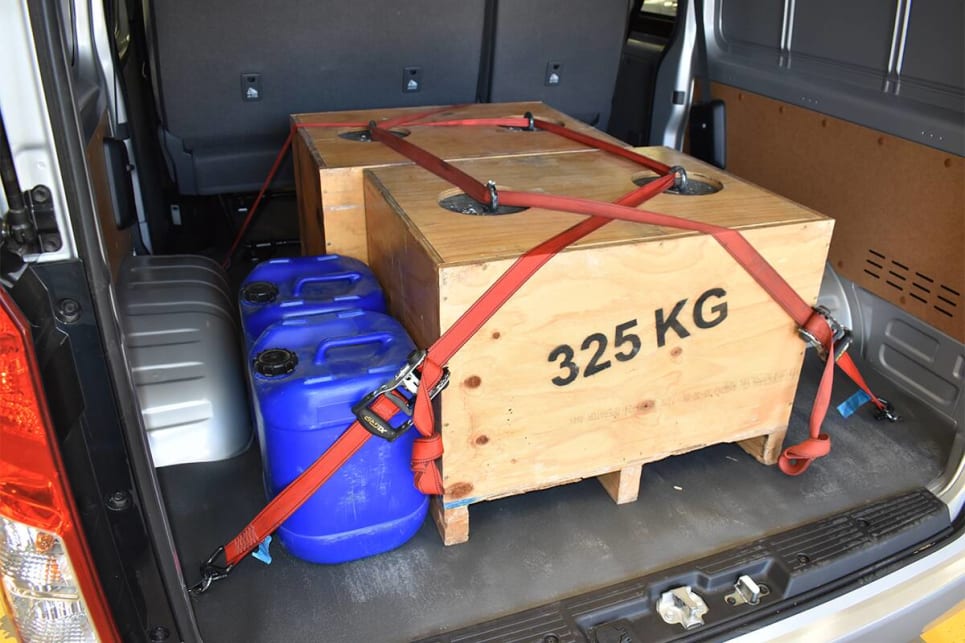 It's also rated to tow up to 1500kg of braked trailer and with a 4800kg GCM.
It's also rated to tow up to 1500kg of braked trailer and with a 4800kg GCM.
-
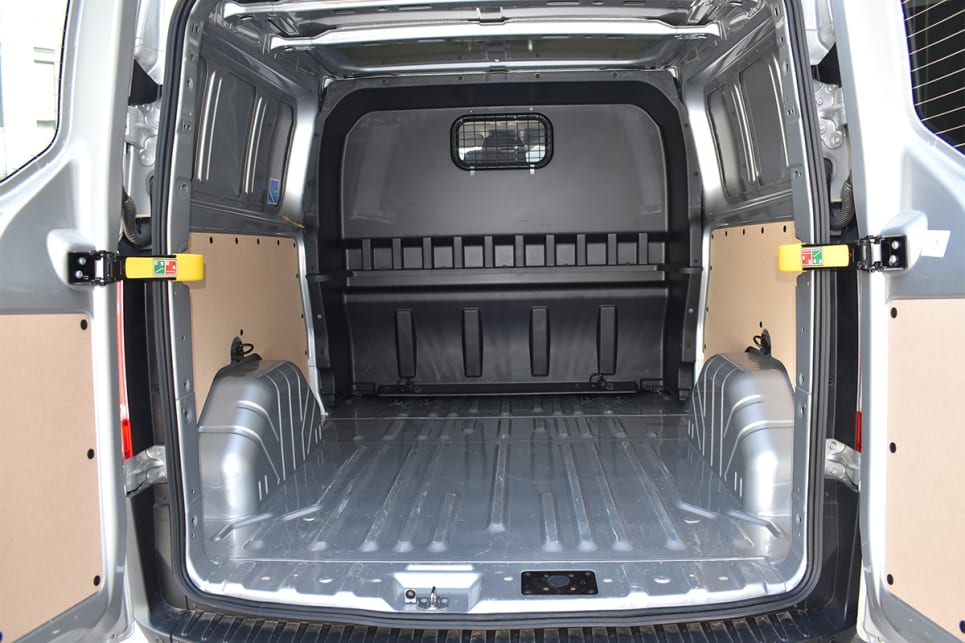 The Transit’s 2251kg kerb weight undercuts the HiAce by some 54kg.
The Transit’s 2251kg kerb weight undercuts the HiAce by some 54kg.
-
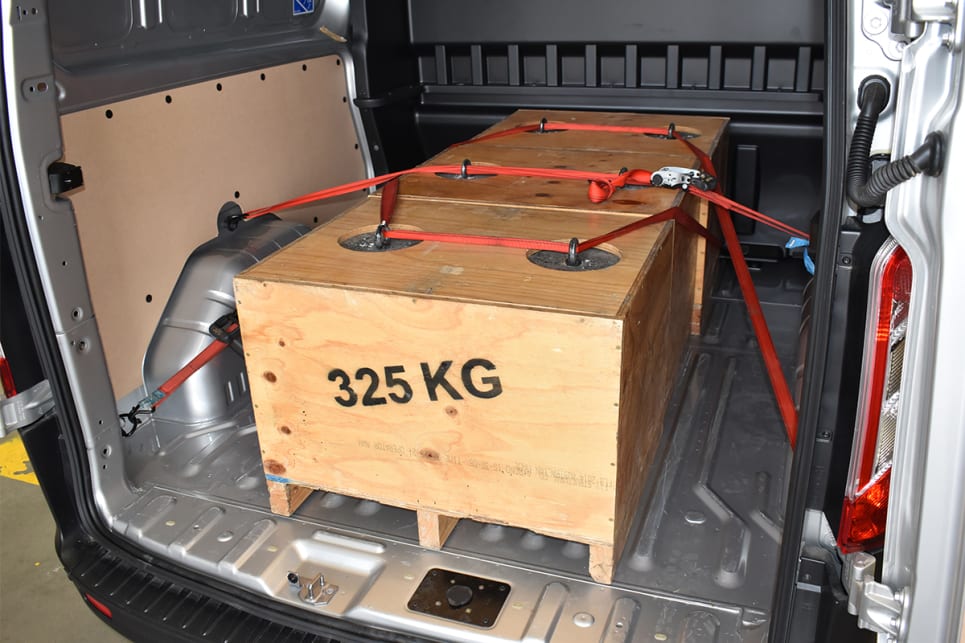 Its 3400kg GVM results in a big 1149kg payload capacity.
Its 3400kg GVM results in a big 1149kg payload capacity.
-
 The Renault’s relatively light 2004kg kerb weight and 3070kg GVM allows for a sizeable 1118kg payload.
The Renault’s relatively light 2004kg kerb weight and 3070kg GVM allows for a sizeable 1118kg payload.
-
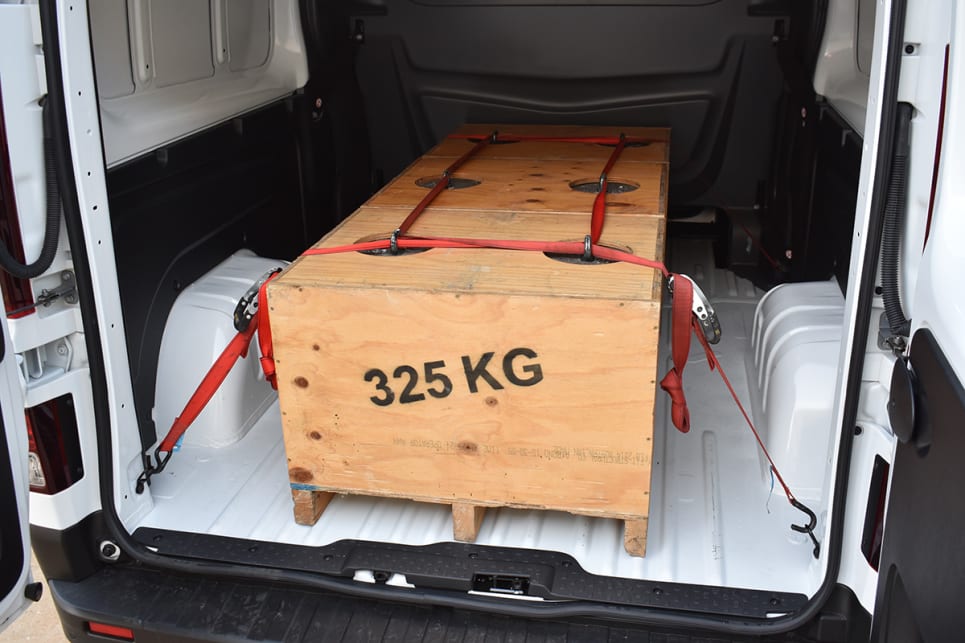 It’s also rated to tow up to 1630kg of braked trailer and it can legally carry its maximum payload while doing it.
It’s also rated to tow up to 1630kg of braked trailer and it can legally carry its maximum payload while doing it.
It's also rated to tow up to 1800kg of braked trailer, 300kg more than the HiAce, but its 4365kg GCM rating (the smallest here) would only leave 314kg of legal payload, which could easily be used up by an adult crew of three – let alone six. Lowering the braked towing limit to 1500kg like the HiAce would leave a more useful 614kg of payload capacity, but that’s still 380kg less than the HiAce can carry while towing the same trailer weight.
The Renault’s relatively light 2004kg kerb weight and 3070kg GVM allows for a sizeable 1118kg payload. It’s also rated to tow up to 1630kg of braked trailer and it can legally carry its maximum payload while doing it. So, that’s a big GCM rating of 4700kg, only 100kg less than the HiAce, which would also be well suited to any number of work and recreational roles involving crews.
| Toyota HiAce LWB Crew Van | Renault Trafic Crew Lifestyle | Ford Transit Custom LWB 340L DCiV |
Kerb weight | 2305kg | 2004kg | 2251kg |
GVM | 3300kg | 3070kg | 3400kg |
Payload | 995kg | 1066kg | 1149kg |
GCM | 4800kg | 4700kg | 4365kg |
Braked tow rating | 1500kg | 1630kg | 1800kg |
Cargo bay length | n/a | 1740mm | 1944mm |
Cargo bay width | n/a | 1662mm | 1775mm |
Cargo bay height | n/a | 1387mm | 1406mm |
Width between rear wheel housings | 1268mm | 1268mm | 1390mm |
Sliding door opening | 1010mm | 907mm | 930mm |
Load volume | 3-4.0 cubic metres (approximate) | 4.0 cubic metres | 4.4 cubic metres |
Load anchorage points | Four | Six | Six |
Standard roof racks | No | No | Yes |
Max roof-rack weight | 120kg | n/a | 100kg |
Standard cargo bay/rear seat access | Dual side sliding glazed doors and single-lift glazed tailgate | Dual side sliding glazed doors and glazed twin-swing rear barn doors | Dual side sliding glazed doors and glazed twin-swing rear barn doors |
Optional cargo bay access | None | Glazed single-lift tailgate | Glazed single-lift tailgate |
The load volume of the standard LWB HiAce’s cargo bay is 6.2 metres but Toyota does not publish official dimensions or load volume for the crew version’s smaller cargo bay. So, by our guesstimates, it’s roughly half the length with roughly half the load volume. That’s about 3.0 cubic metres or more, which still dwarfs most dual cab utes fitted with hard canopies.
The cargo bay walls are lined to mid-height and there’s four load anchorage points at floor height. However, due to the rear seat blocking access through the side doors, the cargo bay can only be accessed through the single-lift tailgate, which is not forklift-friendly.
There’s also no standard load protection for occupants, so our best advice would be to install Toyota’s genuine accessory (or aftermarket) steel-mesh cargo barrier. However, that would do nothing to reduce cargo bay noise in the crew area, which at highway speeds can be considerable.
Ford claims a huge cargo bay load volume of 4.4 cubic metres, which is the equal of a standard Hyundai iLoad van. That’s also enough room to carry a standard 1165mm-square Aussie pallet or two 1200 x 800mm Euro pallets or, needless to say, a mountain of gear.
The cargo bay walls and rear barn-doors are also lined to mid-height, plus there’s six load anchorage points and a handy 12-volt outlet in the right-side door pillar. Road noise emanating from the cargo bay is effectively insulated from the cabin area by the bulkhead.
The Renault’s cargo bay offers 4.0 cubic metres of load volume. That’s slightly less than the Ford but it can also carry an Aussie pallet or two Euro pallets. Like the Transit Custom there are six sturdy anchorage points and the walls and rear doors are lined to mid-height. There’s also a handy storage bin for tarps, cargo padding, ropes/straps etc at the base of the bulkhead which extends under the rear seat.
So, the Transit Custom has the biggest payload and the HiAce has the highest GCM rating, with the Trafic a happy medium. So, if a big payload is most important then the Ford shines, but if a more practical balance between payload and towing weight is a priority then the Toyota and Renault have more appeal. The Ford and Renault are also more forklift-friendly than the Toyota, so again it’s horses for courses and only a buyer can decide which horse best suits their course.
Model | Score (out of 10) |
HiAce Crew | 8 |
Trafic Crew | 8 |
Transit Custom Crew | 8 |




